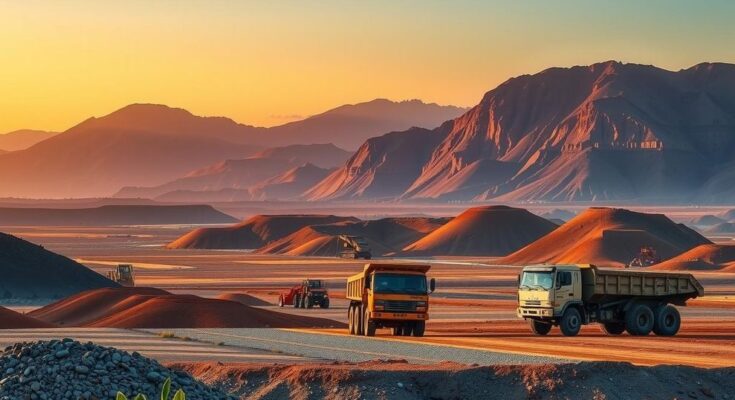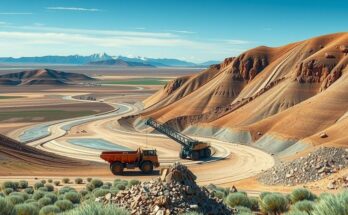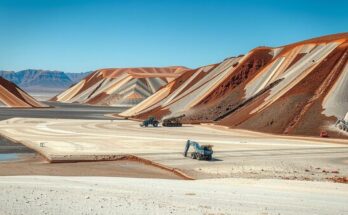Rwanda plans to double its mineral recovery rate from 40% to 80% by 2029, targeting annual mineral exports of $2.2 billion. Strategies include mechanizing mining operations, local production of explosives, adopting advanced sorting technologies, and promoting sustainability through recycling and efficient resource management.
The mining sector in Rwanda currently experiences a mineral recovery rate of approximately 40%, resulting in a significant loss of 60% of minerals during extraction. In an effort to double this rate by 2029, the government has established a target of $2.2 billion in annual mineral exports, an increase from $1.1 billion generated in 2023. The Rwanda Mines, Petroleum and Gas Board (RMB) has outlined ten strategies to achieve the desired mineral recovery and export goals.
Firstly, increasing mechanization of mining operations is essential. The implementation of modern equipment will facilitate a more efficient recovery process. The RMB highlighted the need for better access to mining-related services and technologies to transition from artisanal to semi-mechanized and, eventually, industrial operations.
Secondly, ensuring access to affordable electricity and local production of explosives is imperative to reduce mining costs and losses. High transportation costs hinder the importation of explosives, thus local manufacturing is proposed as a beneficial investment opportunity.
The third strategy involves introducing sensor-based sorting technology which is essential for enhancing mineral recovery rates, especially with complex ore types. This advanced technology will enable more effective separation of valuable minerals from waste materials during processing.
Moreover, the industry is calling for investments in green and recycling technologies to promote sustainability. By recovering valuable minerals from waste, these technologies can mitigate the need for new mining operations.
Another important measure is the operationalisation of geosciences laboratories which will provide analytical support for mineral exploration and regulatory processes. These labs will facilitate accurate resource assessments and optimize mining methods.
The government, in collaboration with Rio Tinto, is advancing detailed mineral exploration in identified Prospective Target Areas (PTAs) to better delineate and quantify mineral resources. This initiative is expected to enhance resource identification and management.
Additionally, establishing processing plants for tungsten, lithium, and gemstone polishing presents opportunities for private investment, aligning with the government’s goal of making Rwanda a regional mineral value-addition hub.
The engagements of the private sector are critical in enhancing the mining industry. The government has implemented various policies to improve the investment climate and sustain economic growth within the sector.
Furthermore, efficient water management practices are crucial for optimizing mineral recovery and ensuring minimum environmental impact. By improving water recycling and managing usage, mining operations can achieve more stable processing conditions.
Finally, promoting professionalization and enhancing geological knowledge among approximately 75,000 workers in the mining sector is essential to ensure operational efficiency and safety. This knowledge is crucial for exploring, extracting, and processing minerals effectively, thereby boosting the industry’s performance.
In summary, Rwanda aims to double its mineral recovery rate from 40% to 80% by 2029 by implementing various strategies including mechanization of operations, local production of explosives, and the adoption of advanced sorting technologies. Investing in sustainability, enhancing geological knowledge, and engaging the private sector further support the nation’s ambitious mineral export target of $2.2 billion annually. Each strategy emphasizes holistic improvements that will bolster the economic viability of the mining sector.
Original Source: www.newtimes.co.rw




